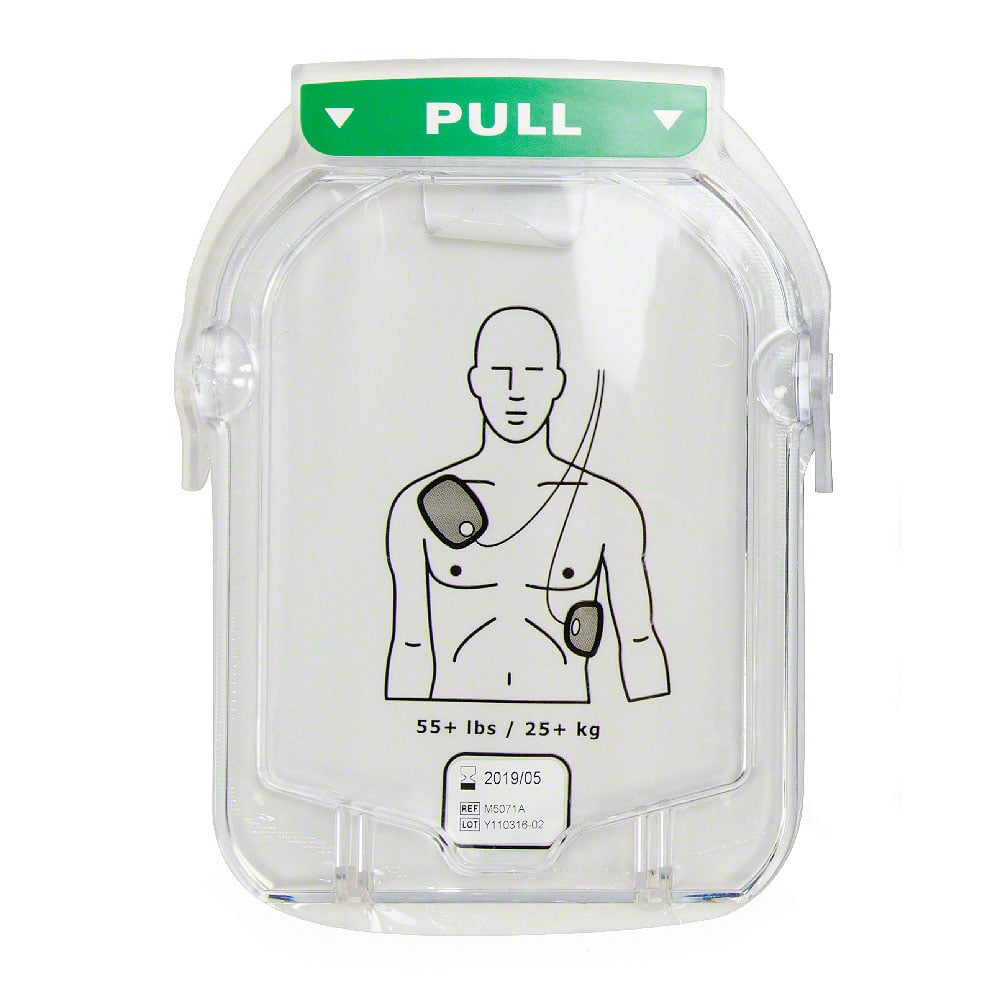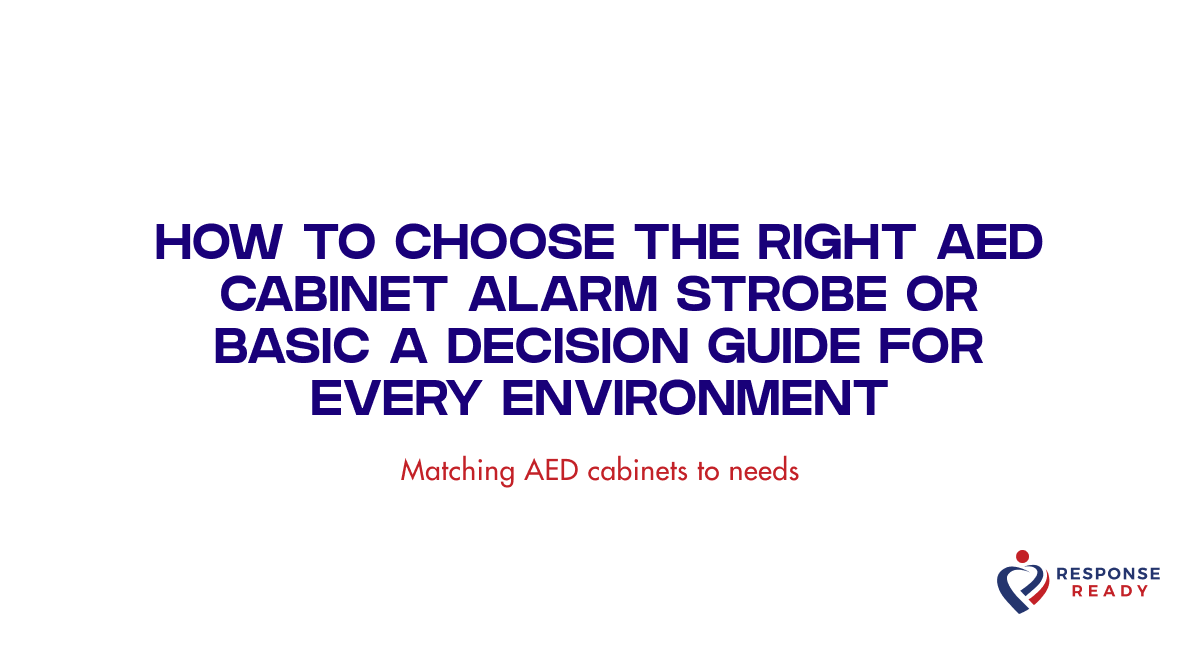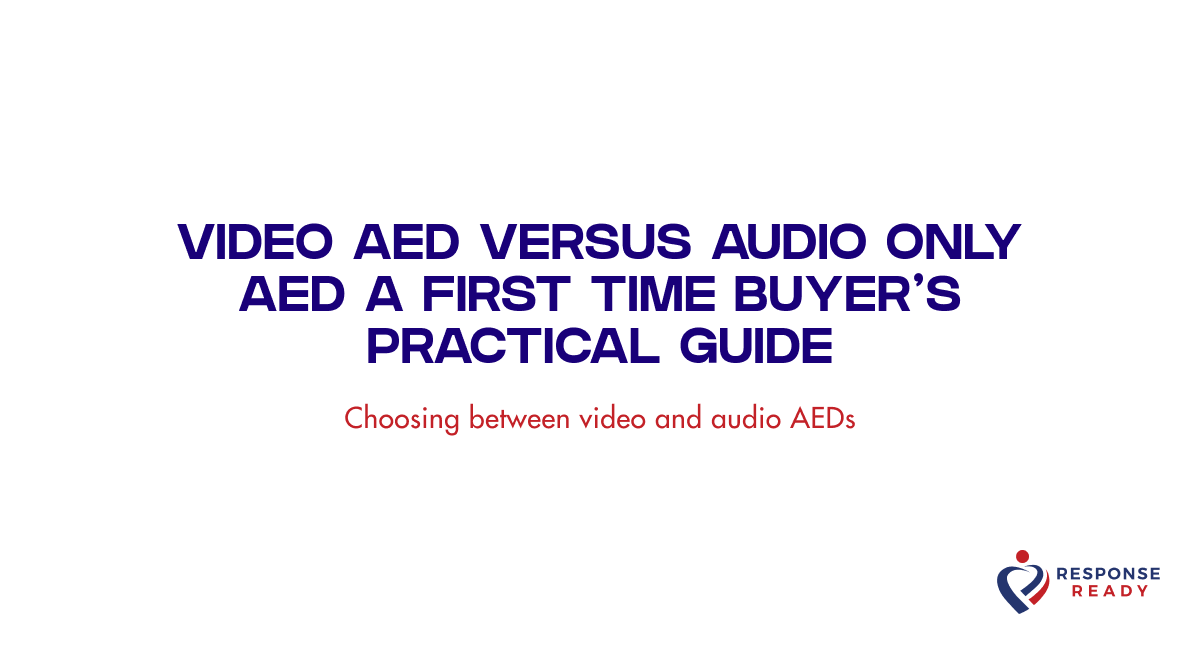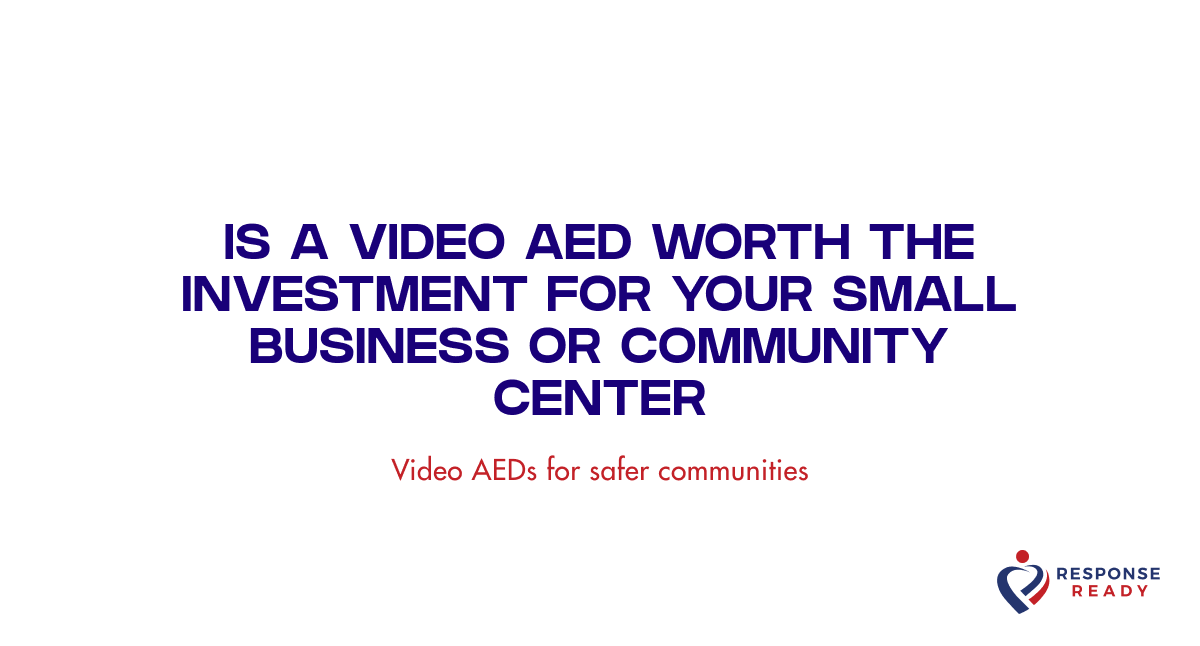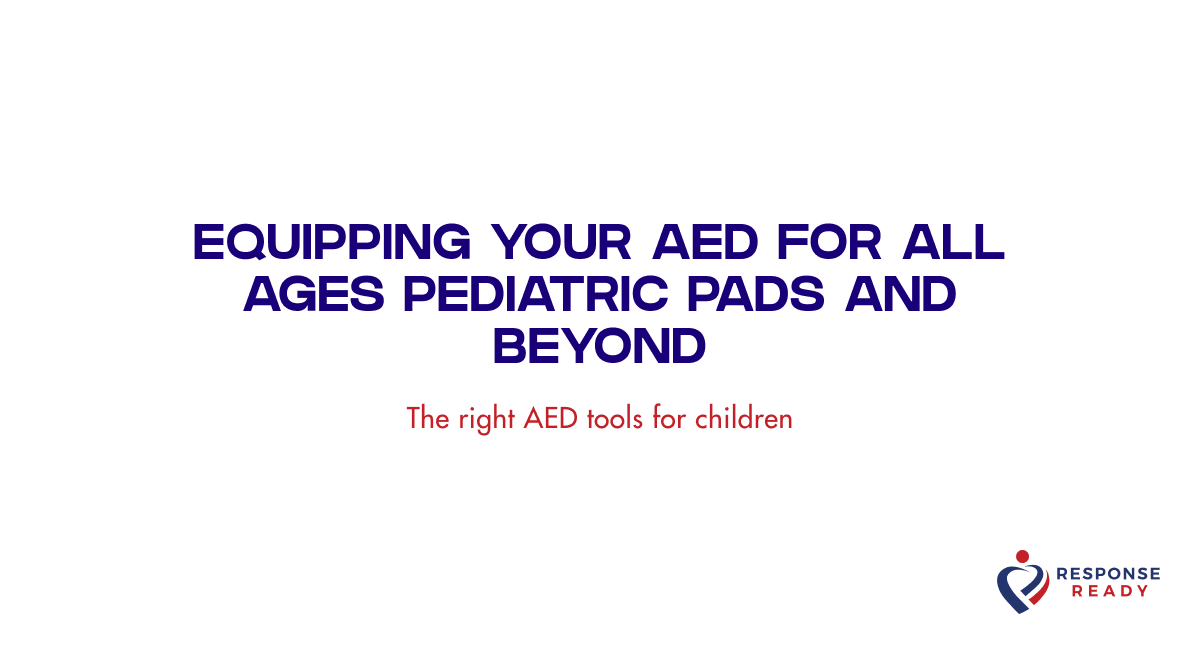When you’re deciding to place a life-saving Automated External Defibrillator (AED) in your home, school, or small business, one of the first questions you’ll face is whether to choose a semi-automatic or a fully-automatic model. The technical difference is simple, one has a shock button, and the other doesn’t. But the right choice for you goes much deeper than that.
The most important question isn't about a button. It’s about what makes a rescuer, who is likely nervous and under immense pressure, feel most confident and capable of acting decisively. The answer lies not in the type of automation but in the overall design and supportive features of the device itself.
The surprising truth why some AEDs are twice as effective as others
You might assume that all AEDs perform equally well in an emergency, but that’s not the case. A revealing usability study found a dramatic difference in performance between devices. While some models had a 100% success rate in delivering a shock, others were successful only 47% of the time. Shockingly, 20% of users failed to deliver a shock at all with one particular model.
This massive gap in effectiveness has nothing to do with whether the device was semi or fully-automatic. It’s all about the user interface, the clarity of the instructions, and the overall design. This proves that choosing the right AED is less about the shock button and more about selecting a device that is as foolproof and confidence-inspiring as possible. In fact, data from the Sudden Cardiac Arrest Foundation shows that the most common reasons for AED failure in the field are maintenance issues like dead batteries and problems with electrode pads, not the mode of shock delivery.
When to choose a semi automatic AED for control and confidence
A semi-automatic AED guides the rescuer through every step, from pad placement to CPR. When it detects a shockable heart rhythm, it will charge and then instruct the rescuer to press a flashing button to deliver the shock. This gives the user final control over the process.
This type of AED is an excellent choice for environments where responders may have some level of training or feel more comfortable taking that final, decisive action. This includes small businesses with a designated safety team, schools with a nurse on staff, or homes where family members have taken a CPR and AED course. Having control can be reassuring, as it allows the rescuer to make a final verbal check to ensure no one is touching the person before delivering the shock.
Popular and user-friendly semi-automatic models like the Philips HeartStart OnSite AED and the Defibtech Lifeline AED are designed to empower first responders in these settings.
When to choose a fully automatic AED for simplicity in public spaces
A fully-automatic AED works almost identically to a semi-automatic one, but with one key difference. After detecting a shockable rhythm and charging, the device provides a clear verbal warning and a countdown before delivering the shock automatically. There is no button to press.
This design is specifically intended to overcome "rescuer hesitation," a common reaction for untrained bystanders in a high-stress emergency. For public access locations like gyms, community centers, or building lobbies where anyone could be the first responder, a fully-automatic model offers the ultimate simplicity. It removes the psychological burden of pressing the button, ensuring the life-saving shock is delivered without delay. Models like the HeartSine Samaritan PAD 360P are designed to make the rescue process as straightforward as possible for the general public.
The features that matter more than a button a buyer's checklist
Since usability is the most critical factor, you should focus on modern features that actively help a rescuer save a life. These are found on both semi and fully-automatic models, and they make a far greater impact than the type of automation.
Real-time CPR feedback
High-quality chest compressions are just as important as the shock itself. Many advanced AEDs now provide real-time audio or visual feedback, telling you to "push harder" or "good compressions." This guidance is proven to improve CPR quality and can dramatically increase the chance of survival. When choosing an AED, prioritizing one with CPR feedback is one of the most impactful decisions you can make.
Ease of use and pad technology
In a chaotic moment, simplicity is everything. Look for AEDs with clear, calm voice instructions and easy-to-understand graphics. Consider the pad system as well. Some models, like the ZOLL AED Plus, use a one-piece pad system that simplifies correct pad placement. Others use an infant/child key, like the Philips HeartStart FRx, which allows you to use the same adult pads for pediatric rescues, saving critical time and reducing complexity.
Device readiness and maintenance
An AED only works if it's ready to go. The best devices perform daily, weekly, and monthly self-tests of their battery, pads, and internal circuitry, and they provide a clear status indicator so you can see they are ready at a glance. For even greater peace of mind, our Response Ready App helps you automate readiness checks and compliance reminders across multiple devices, ensuring your AED is always prepared for an emergency.
Myth vs fact debunking common AED misconceptions
Navigating the specifications can be confusing. Let’s clear up a few common myths.
Myth:
Fully-automatic AEDs are safer or more advanced.
Fact:
Both types are equally safe and effective. They are both approved by the FDA and use the same sophisticated rhythm analysis technology. The most advanced AED is the one that a rescuer can use quickly and correctly, which comes down to overall device design and confidence-building features.
Myth:
You need extensive training to use a semi-automatic model.
Fact:
While AED and CPR training is always recommended to build confidence, all modern public access AEDs are designed for untrained laypeople. A semi-automatic device provides clear, insistent prompts to "push the shock button," leaving no room for confusion.
Myth:
Only certain types of AEDs offer CPR assistance.
Fact:
Advanced support like real-time CPR feedback is a model-specific feature, not a type-specific one. You can find this life-saving technology on both semi-automatic and fully-automatic devices.
How to choose the right AED for you a simple framework
Instead of focusing on the button, use this simple framework to make a confident choice.
-
Assess your potential rescuer.
Who is most likely to use the AED? Is it a school nurse or designated workplace responder who might prefer having final control? Or is it a member of the public or a family member who would benefit from maximum simplicity? -
Evaluate your environment.
Where will the AED be located? A controlled environment like a small office may be well-suited for either type, while a busy public school lobby might favor a fully-automatic model to reduce bystander hesitation. -
Prioritize confidence-building features.
Based on your answers, decide which features matter most. For an untrained rescuer in a public space, a fully-automatic model with CPR feedback might be the best combination. For a trained user, a semi-automatic model with clear instructions could be ideal.
Ultimately, the best AED is the one that gets used correctly in an emergency. By focusing on usability and supportive features, you can equip your space with a device that truly empowers anyone to save a life.
Frequently asked questions
Q: Is one type of AED medically better than the other?
A: No. Both semi-automatic and fully-automatic AEDs are approved by the FDA and are medically effective. They both analyze the heart's rhythm and deliver the same life-saving shock. The best choice depends on your environment and the likely rescuer's comfort level.
Q: Can a fully-automatic AED shock someone by mistake?
A: This is a common concern, but the risk is extremely low. All modern AEDs, both semi- and fully-automatic, require the pads to detect a shockable heart rhythm before they will charge. A fully-automatic device will also issue clear verbal warnings for everyone to stand clear before delivering a shock, ensuring rescuer and bystander safety.
Q: Does a semi-automatic AED require special certification to use?
A: No, you do not need special certification. While CPR and AED training is always encouraged to build confidence, semi-automatic AEDs are designed with simple, step-by-step voice prompts to guide any layperson through the process, including when to push the shock button.
Q: What happens if I hesitate to push the button on a semi-automatic AED?
A: The device is designed for this possibility. It will repeat the instruction to "push the shock button" and the button itself will flash, guiding you to take action. The most important thing is to follow the device's prompts as quickly as possible. If hesitation is a major concern for your environment, a fully-automatic AED may be a better fit.
Q: Which type is better for a home or small business?
A: For homes and small businesses, the choice often comes down to personal preference. The Philips HeartStart OnSite is a popular semi-automatic choice for its ease of use. If you prefer a hands-off approach, a fully-automatic model like the HeartSine Samaritan 360P offers maximum simplicity. The key is choosing a device you feel confident managing, and our guide on choosing an AED for your home or small business can help.
